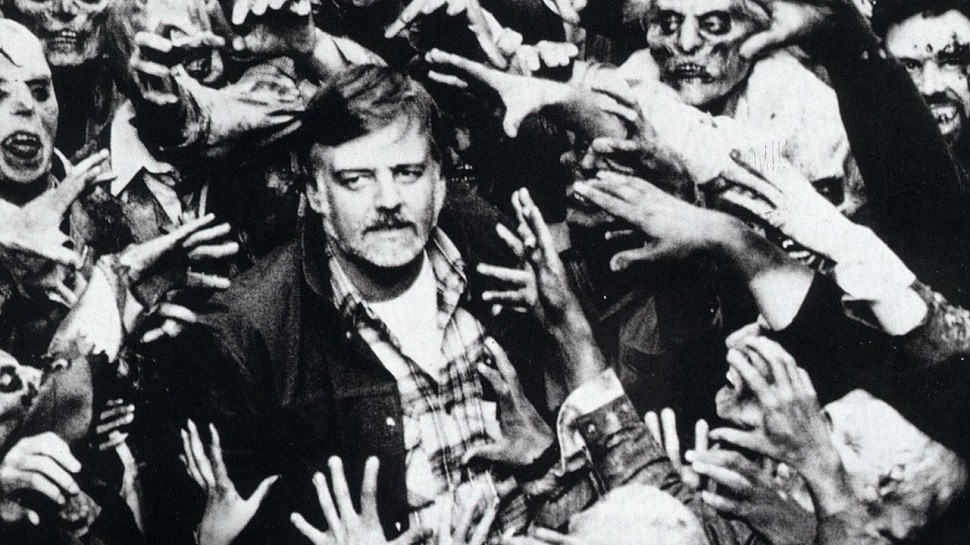
I was a kid growing up in Texas when I came across George A. Romero’s Night of the Living Dead for the first time. It aired each Halloween on a local TV channel. I could never watch the entire movie, it was too scary for my young mind. The bits I did see gave me bad dreams of zombies chasing me and my family through the desert sands of far east El Paso. At the time, I didn’t realize this was a good thing.
Years later in junior high, Romero’s next chapter in his zombie saga, Dawn of the Dead, was playing at the local cineplex. It was released unrated, which was unheard of at the time. No one under 17 would be admitted. I’d read about Dawn in Starlog magazine, my go-to source for sci-fi and horror movies. But how could I see it? Neither of my parents wanted to go see a zombie movie with lots of gore and social commentary. It wasn’t in their wheelhouse. I didn’t even ask them, I already knew their answer.
A kid in my 8th grade class named Henry did get to see Dawn. His parents must have been the free-spirited type, they took him to see it. The following Monday, Henry came to school boasting that he’d seen the movie and what a crazy gore fest it was. After his initial braggadocio, Henry kept quiet about the movie. I think it gave him nightmares for weeks to come.
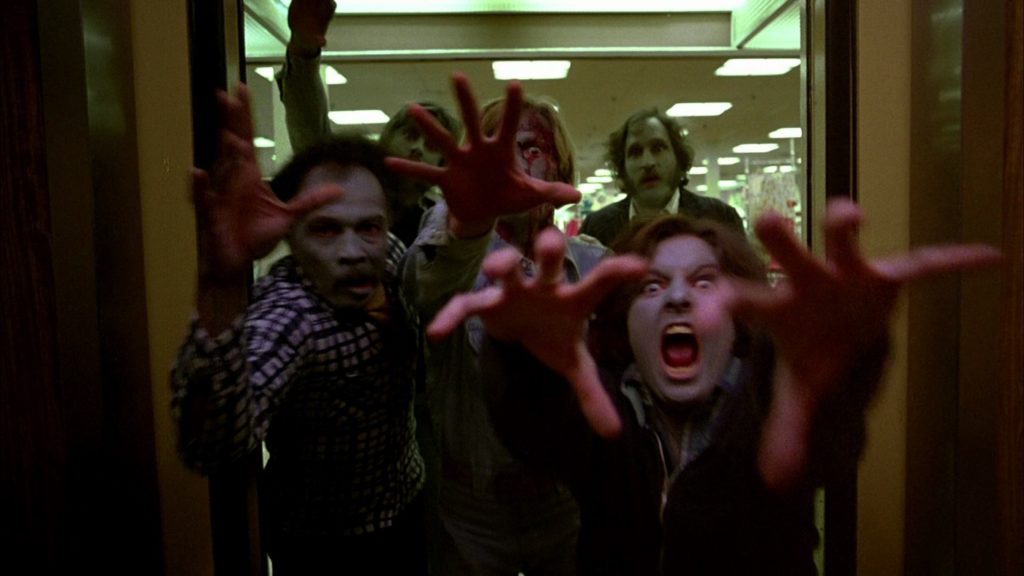
A few years later in high school, I finally got to see Dawn on VHS. I rented it and didn’t even get a second look from the video store cashier as I handed him my money. My sister and I watched the movie on a 13 inch TV that we had carted out of my parents’ bedroom. For some reason, my parents didn’t even question what we were watching. They were in the den watching something else.
We watched multiple scenes in Dawn over and over, rewinding the tape for instant replays. There’s a bit early in the movie where the police shotgun blast a zombie and his head explodes in a shower of blood and brain matter. We laughed so hard that we were crying. Another scene involves a zombie sneaking up on one of the main characters as he’s refueling their getaway helicopter. The zombie climbs on top of a crate to get the jump on our hero, but the top of his skull gets lopped off by the still moving helicopter blades. Were we laughing at the schlocky quality of the movie? Or was it our knee jerk response to the violence in our eyes? There’s even a pie fight scene with the zombies getting hit with creme pies. We actually felt sorry for the zombies.
As I watched Dawn again with other friends, I began to question the filmmaking aspects of it. How did they create all of the zombie effects and gore? How did they shoot the movie in a real mall? I was coming of age in my film understanding and learning how movies were made.
What I saw in Dawn was a skilled filmmaker making movies the only way he knew how — with his bare hands. I was beginning to understand that movies weren’t just made in Hollywood. They were made outside of the system, with much smaller budgets and willed into existence with hard work and resilience.
The next chapter in my Dead viewing odyssey was in college. I worked at the hippest video store in town, a mom and pop operation called Downtown Video. The place was a film connoisseur’s dream and we carried everything from Antonioni to John Waters. Day of the Dead was on video and I took it home to watch. Again, I was made aware of a masterful filmmaker bringing his vision to life on his own terms. The movie was gritty and flawed, but Romero put his own personal stamp on it. This was no cookie cutter Hollywood movie.
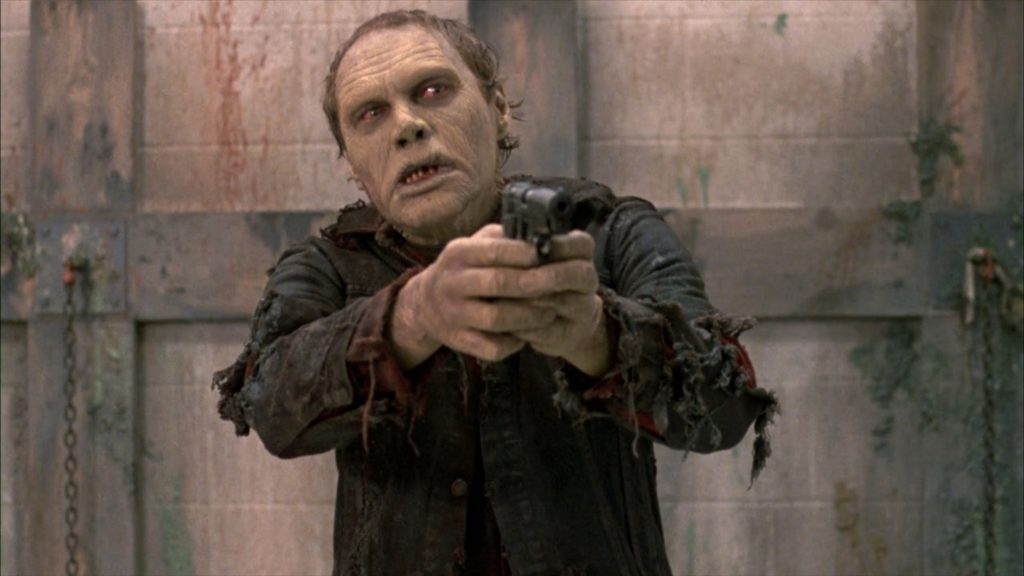
Years later in the late 90s, I would have an encounter with George Romero himself. I was working at Pacific Ocean Post, a boutique editing facility in Santa Monica, California. I worked in the Dub Center, which was a room full of high end videotape machines where we made dubs or copies of commercial spots, episodic TV, whatever was finished in-house and sent out for broadcast. It being Los Angeles and the post production industry, occasionally I’d run into celebrities of all kinds.
One day I came to work and was asked to set up a client viewing. This meant setting up a master tape and patching it into our viewing room, which was a space the size of a large walk-in closet, where a director or producers could view a tape and control the deck remotely. As I put this tape into the deck, I checked the label. It read “Resident Evil 2, Capcom.” Was it just another video game commercial?
I set up the tape and went out to the viewing room to make sure everything was working. When I opened the door, there were five to six Japanese businessmen, all dressed in suits and ties. In the center of this crowd was the man himself, George Romero, wearing his standard khaki cargo jacket! He must have stood a foot taller than everyone else in the room. “Everything okay?” I asked them, to which they said yes. I smiled and closed the door. When I got back to the Dub Center I told my co-workers who I’d seen. Their response was “Who?” I had to remind them of Night of the Living Dead and Dawn of the Dead. Now I regret not ever saying anything to the man. I did think about what I would’ve said though. I would have told him he should be making films and not commercials.
Flash forward to just a few years ago. My wife Kristen and I are living in the suburbs of Philadelphia. We decide to head to Pittsburgh for a long weekend, neither of us having been there. We get into town and see some of the sights. The next day we have a few hours to kill, so I ask Kristen if she’d like to take a quick ride up to Evans City, PA. I tell her that’s where Night of the Living Dead was shot. She says, “Yeah, let’s check it out!”
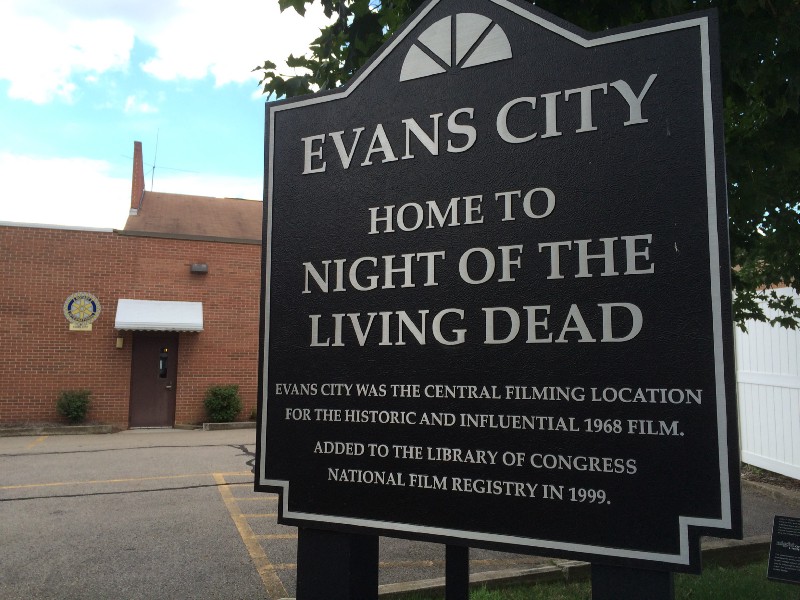
Just 30 minutes north of Pittsburgh, Evans City is a tiny town with just a handful of restaurants and businesses. Romero and his crew shot the opening scene of Night in the Evans City Cemetery and in other locations around town. Not far from the cemetery is the Living Dead Museum, which houses a nice collection of props and behind the scenes photos from the Dead films, along with various memorabilia like t-shirts, mugs and posters. A required stop on any Romero fan’s tour of the area.
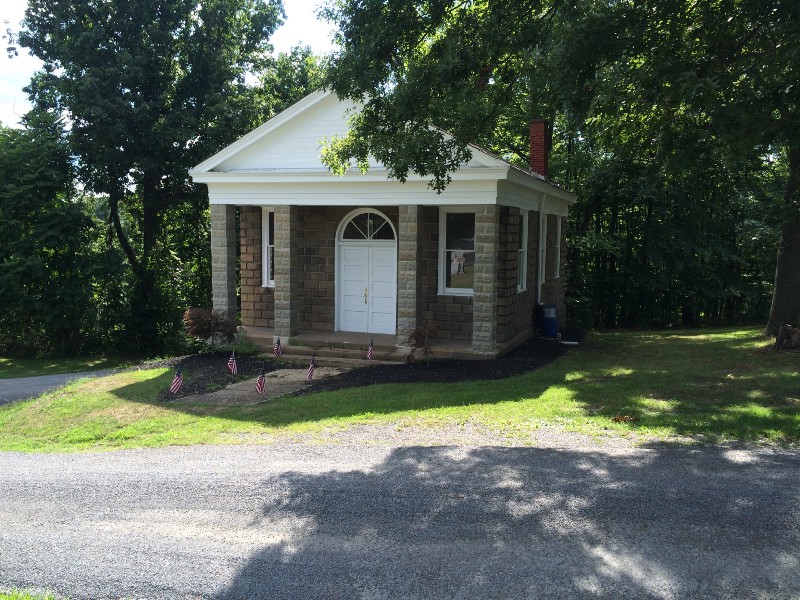
The cemetery itself was lonely and kind of creepy, even though we were there at 2pm in the afternoon. No one else was around when we parked near the cemetery chapel. As we walked around the headstones, I pictured Romero and his crew filming the opening scene of Night, unaware of the sensation the movie would become and its effect on his career. His talent will be missed, but I like to think Romero will be back to visit the Evans City Cemetery from time to time.
Are you a horror fan? How have Romero’s films affected you?
Leave a Reply